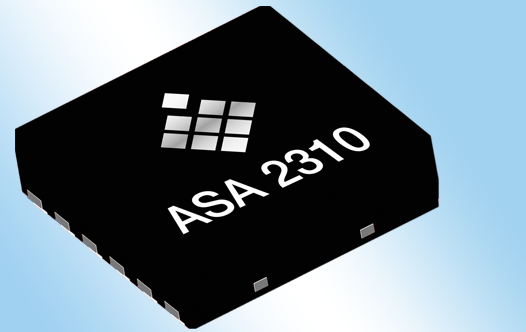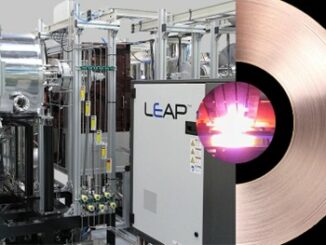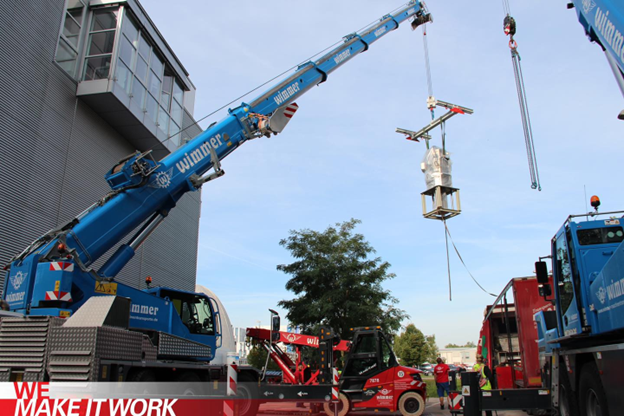
Some magnets are heavier than others. Handling them can be a challenge, in this case tackled by Wimmer Maschinentransporte of Germany. They can take longer to make, too. Two recent examples from the engineering and manufacturing facilities of Bilfinger Noell are the 13-ton monster PERC magnet shown, in part, above, and a superconducting “Wiggler” recently delivered to Brookhaven National Laboratory.
Now in place at the Technical University of Munich, the PERC magnet system required several years of engineering and manufacturing at Bilfinger Noell in Wurzburg, Germany before delivery to its home. It resides at the university’s Research Neutron Source Heinz-Maier-Leibnitz and is the centerpiece of a new experiment in low-energy particle physics.
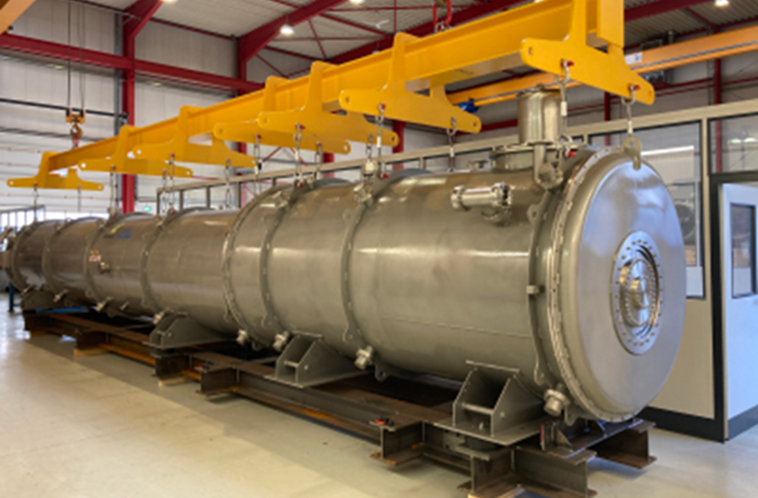
The PERC facility, at the Mephisto beam line at the FRM II research reactor of the Maier-Leibnitz Zentrum (MLZ), aims to measure several observables in neutron decay with an order of magnitude improvement in precision in order to determine constants within the Standard Model of particle physics precisely and to search with improved sensitivity for new physics beyond it. The magnet system is the main component.
Precision measurements of neutron beta decay provide important information about the Standard Model of particle physics and permit sensitive searches for new physics. Presently, experiments are limited to an accuracy level of 10-3. The new instrument PERC is designed to improve the sensitivity of neutron decay studies by one order of magnitude.
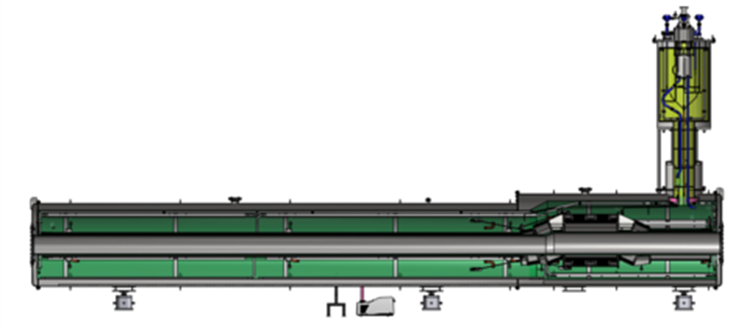
The superconducting magnet system is the main component. About 12 meters long, it produces a magnetic field between 1 to 6T within a 30-35cm bore mostly in direction along its length. This field is used to guide charged particles to detector systems, separating them from the cold neutron beam. It contains an 8-meter long active volume in a homogeneous magnetic field while the 6T magnetic filter improves systematics of the decay measurements.
“We are proud to have once again designed and manufactured a key component for science in the field of particle physics,” said Eckhard Theisen, Bilfinger Noell project manager, when it was delivered.
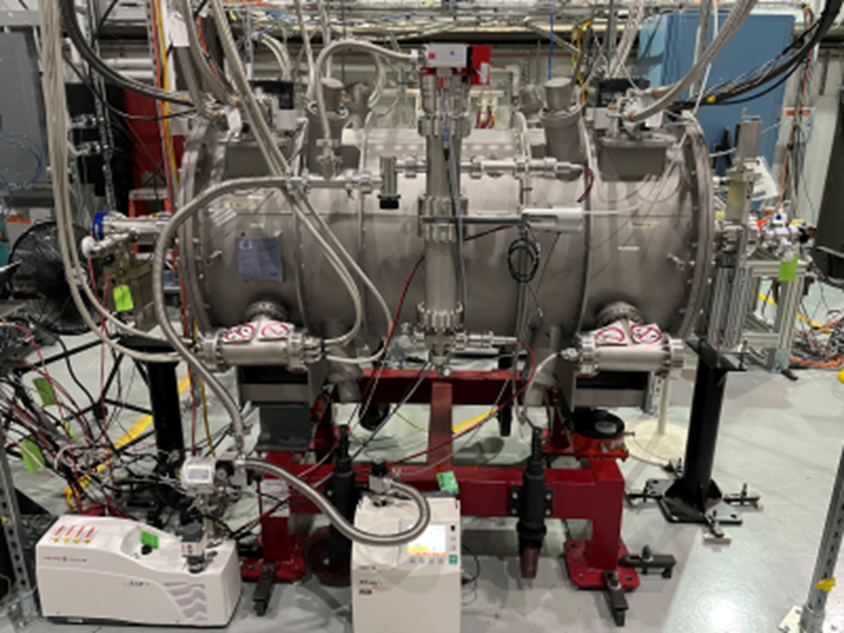
In another demanding project, Bilfinger-Noell recently delivered and installed a superconducting undulator, known as a Wiggler, for the HEX beamline at Brookhaven National Laboratory on Long Island, New York. Bilfinger-Noell and Karlsruhe Institute of Technology (KIT) helped develop and optimize the device for its scientific research duties.
KIT and Bilfinger Noell joined forces several years ago for the development of superconducting undulator technology for synchrotron light sources, developing them into a commercial product with worldwide application at scientific research facilities. The development of superconducting undulators started in Karlsruhe in the early 1990s and KIT holds several patents applicable to the technology.
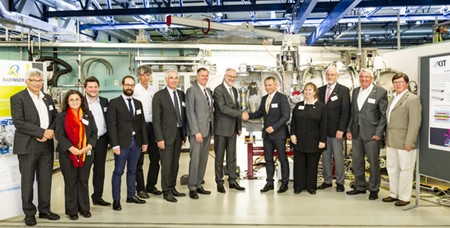
SCU technology enables the generation of more powerful X-rays and a wider range of experiments at modern synchrotron light sources and free-electron lasers. Compared to conventional permanent magnet devices, SCUs can produce stronger magnetic fields at a given period length and vacuum gap.
Today, synchrotron radiation is an indispensable tool for characterization of materials relevant for a broad range of disciplines including biology, medicine, chemistry, physics and engineering. The overwhelming success of the synchrotron light sources is based on the outstanding properties of the X-rays emitted by electrons in magnets, in particular, in undulators consisting of magnet arrays. In superconducting undulators the magnetic fields are generated by superconducting wires that allow for higher magnetic fields than achievable with permanent magnets. Consequently, harder and more intense X-rays can be generated at existing and future light sources and free electron lasers.
Superconducting undulators are unique not only in terms of field strength, they also outperform permanent-magnet devices with respect to radiation hardness. The technology developed by the partners KIT and Bilfinger Noell includes technical solutions for cooling the device and for its operation, which overcome aspects of other approaches: the device is a conduction-cooled and plug & play solution avoiding the challenges associated with a liquid helium inventory. Furthermore, the gap between the upper and lower half of the undulator can be varied over a wide range during operation of the accelerator, thus providing an additional degree of freedom and flexibility.
An undulator is an array of dipole magnets with alternating magnetic field direction, which forces the beam of high-energy electrons onto an “undulating” path, leading to the emission of intense and highly collimated electromagnetic radiation. In contrast to common undulators that use permanent magnets, wigglers use superconducting electromagnets, relying on the ability of some materials at very low temperatures to conduct extremely high electrical currents with zero resistance. The high currents allow creating high magnetic fields inside the device.
For more info, see www.bilfinger-noell.com, www.mlz-garche.de, www.tum.de, and www.kit.edu.


